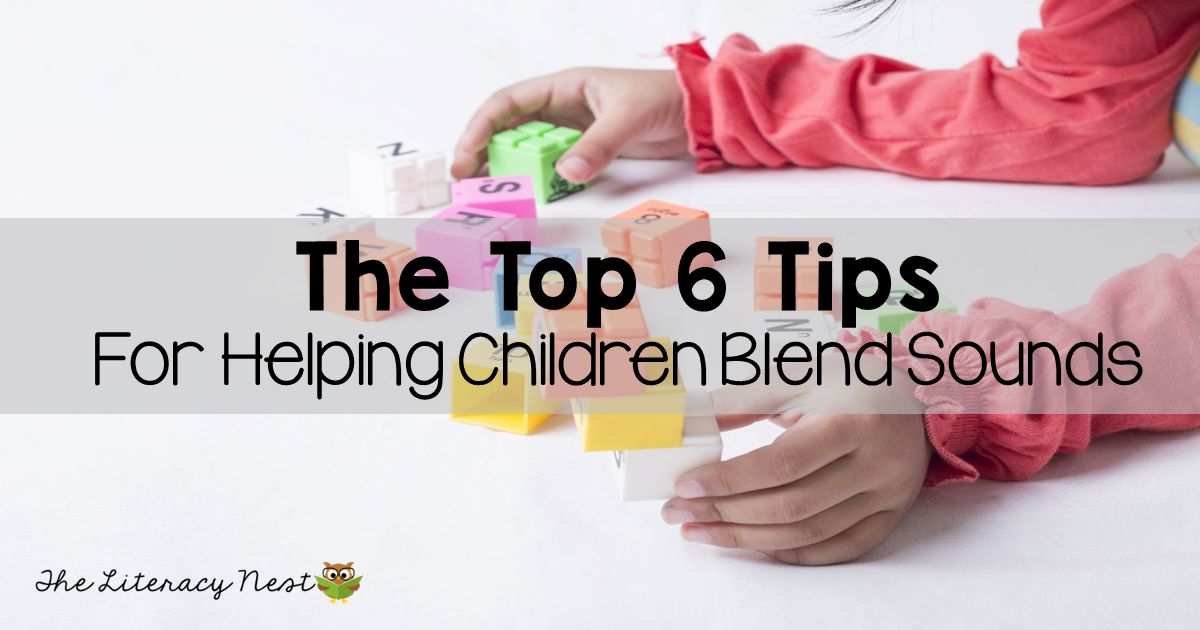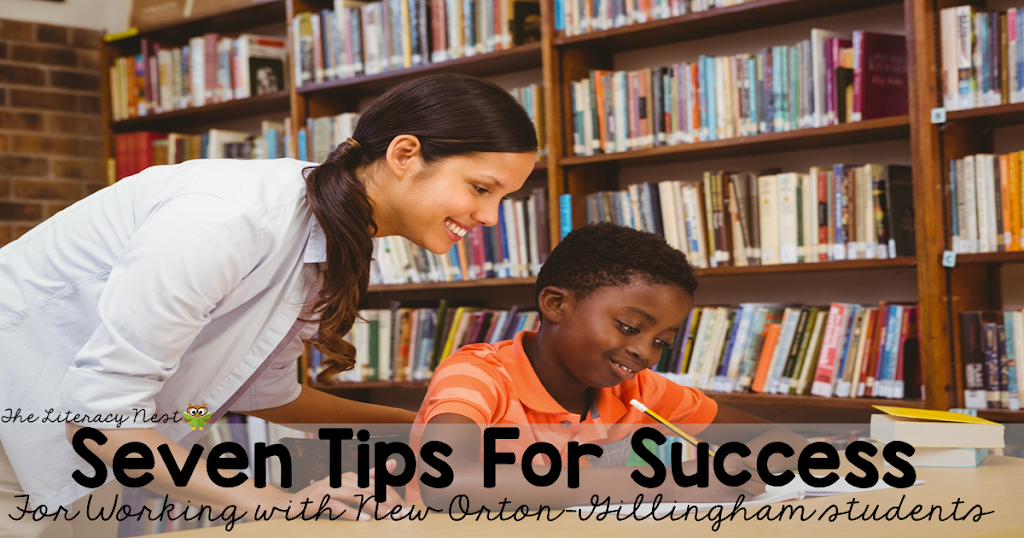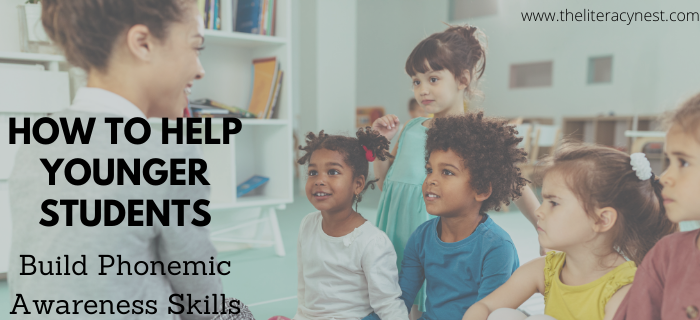Share:
When a Student Finds It Hard to Blend Sounds Together: 6 Tips for Getting Over the Hump
While very often, things go along quite swimmingly in the Orton-Gillingham lesson plan, from time to time we all have a student that has particular difficulty blending sounds together. They know their letters and can correctly identify the sounds they make. They can say the sounds in sequence, but they struggle to put the sounds together to create a recognizable word. No two children are exactly the same, but here are some techniques that can be helpful for kids that have difficulty blending.
1. Pay attention to Phonemic Awareness.
Since phonemic awareness skills follow a predictable developmental sequence, if a student is not secure in earlier phonemic awareness skills such as isolating sounds, they are going to have extreme difficulty blending sounds. Even older students may be lacking in these skills and have not had adequate learning opportunities to fill in the missing pieces in the upper grades. Additionally, make sure that the student can differentiate voiced and unvoiced pairs (g/k, v/f, b/p, j/ch). Segmenting and blending go hand in hand, so be sure to work on both skills. This
phonemic awareness resource may assist your students who still struggle in this area.
2. Simplify the task.
Start with blending 2 sounds using just one vowel sound at a time. Stick with that vowel sound until the student is proficient at blending two sounds. Work with consonant sounds that are easily held, also called continuous consonants, such as f, l, m, n, r, s, v, z, sh, th. Work with just a few sounds at a time. For students with extreme difficulty, it may work best to continue to work with a single vowel with 3 sounds before introducing other vowel sounds to the mix. Be careful of am and an since these chunks distort the sound of the a. Reinforce the blending and segmenting skills with these sounds across the lesson in phonemic awareness, reading and writing activities. When moving to three sounds, blending the beginning two sounds to the coda, or final sound, ba-t, is an easier skill than blending the onset and rime b-at.
3. Scaffold the learning.
Remember to follow a gradual release of responsibility model of instruction (I do, we do, you do) providing plenty of scaffolding to support the student in their efforts. Since blending is the basis of the rest of their reading work, it is very important to teach to mastery.
4. Get them moving.
Don’t underestimate the importance of movement during an
Orton-Gillingham lesson plan. Starting with big movements, gross motor skills such as hopping from one hula hoop to another as they say the sounds can provide valuable support for a child that is really struggling. Using smaller manipulatives is also very important. Elkonin boxes are a valuable tool here. One helpful trick is to tie 3 pieces of yarn together (green, yellow and red are great choices to represent the beginning, middle and ending sounds) and have the child run their finger along each section of the yarn while saying the sound. The student should continue to make the sound until they reach the next section of yarn. This is where using continuous consonants is very helpful because they are easy to stretch. Speeding this procedure up as they practice can help a student for whom blending hasn’t clicked.
5. Try cumulative blending.
Cumulative blending is another way of practicing blending words together that is particularly helpful for students that struggle with working memory to such a degree that impacts their ability to blend words. For cumulative blending, the reader returns to the beginning of the word after adding each sound. So for example, the word Sal would be blended as S…..sa….sal. This technique is particularly helpful for a student that is having trouble moving from blending 2 sounds to 3 sounds or 3 sounds to 4 or 5.
6. Use imagery.
Blending sounds is such an abstract concept that even with the use of manipulatives and extensive modeling, it is difficult for many children to really understand precisely what you are asking of them. Using descriptive imagery such as vacuuming up the sounds for cumulative blending or melting the sounds together like melting chocolate can make the process less abstract and more relatable.
Blending sounds together is a crucial skill for students to master in order to continue to progress in reading. For a student that has difficulty, building the task piece by piece and teaching blending until they are competent and proficient with CVC words and have the skills to tackle words with initial and final blends is one of the greatest gifts we can give them. There are few opportunities in the classroom curriculum, particularly in intermediate grades and beyond to provide the level of scaffolding that some of our children need to become truly proficient. We must provide them with those opportunities in small group instruction, tutoring or intervention services.
Do you have any further ideas or questions? I’d love to hear from you! Feel free to comment below. Thank you for stopping by my blog today.
Share:








Thank you for the ideas!! I love the running fingers over colored yarn and vacuuming up sounds! You have just given me some more tools–thank you!
Hello Emily,
Thank you for this helpful blog post. I like the idea of blending the two beginning sounds to help scaffold the student. Thank you!
Great ideas, thank you!
Gotta get that boy to h..o..p. left to right! LOL. Great ideas in this post!
Wonderful! Glad you enjoyed these ideas!
I'm so glad you liked these ideas! Thanks for reading!
Thanks, Cathy!
Thanks for reading, Barb! 🙂
Thank you for these ideas! I am working with a student now who is having so much difficulty blending sounds. She can blend two sounds sometimes- so I am eager to try the colored yarn idea.
Awesome! Thanks for reading! 🙂
Question: with struggling learners, I’ve had them blend the rime then add the onset. You suggest blending left to right. Can you help me understand why that method is preferable? Thanks in advance!
Hi Kelly- It’s preferred for directionality purposes. Since we read left to right, we blend left to right.
I have a 5 year old and 8 year old that I am tutoring that I will use these great tips with! Thank you so much!!
Glad they are working for you.
Wonderful ideas! I especially like the idea of using hoola hoops. Great to get some gross motor movement and provide some great learning fun. Thank You!
Thank you so much for reading! Glad you enjoyed the tips. 🙂